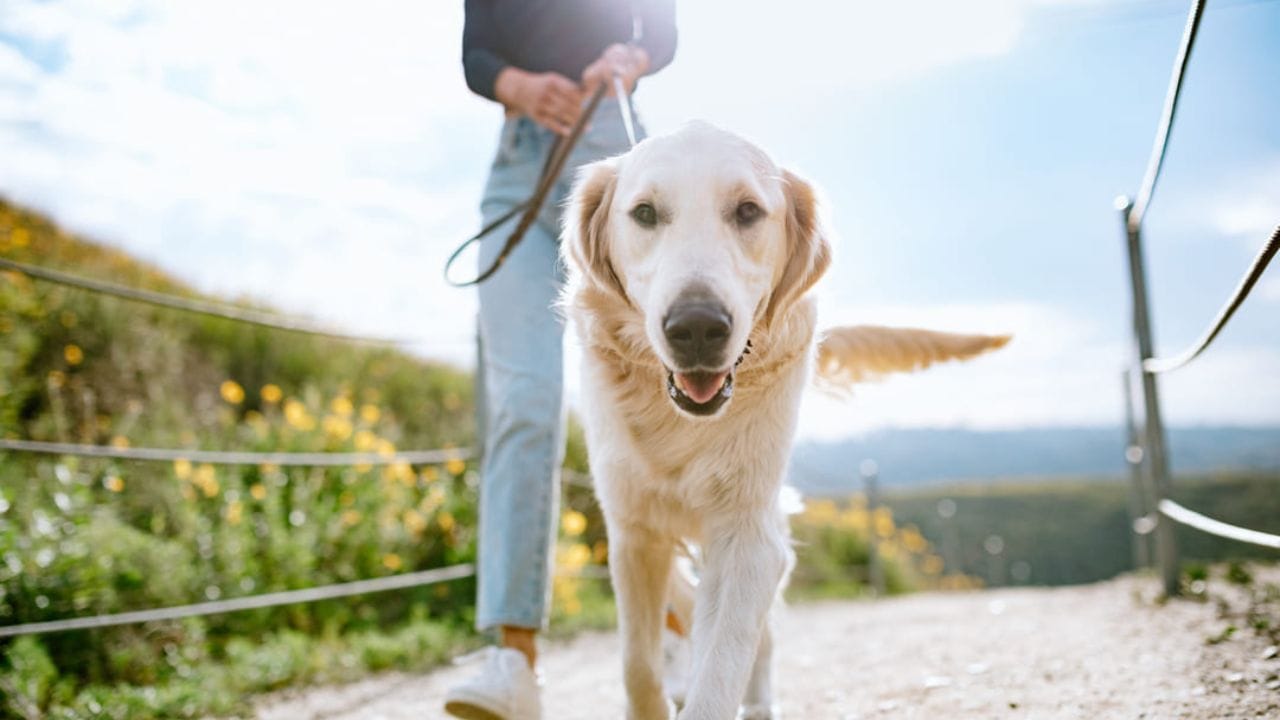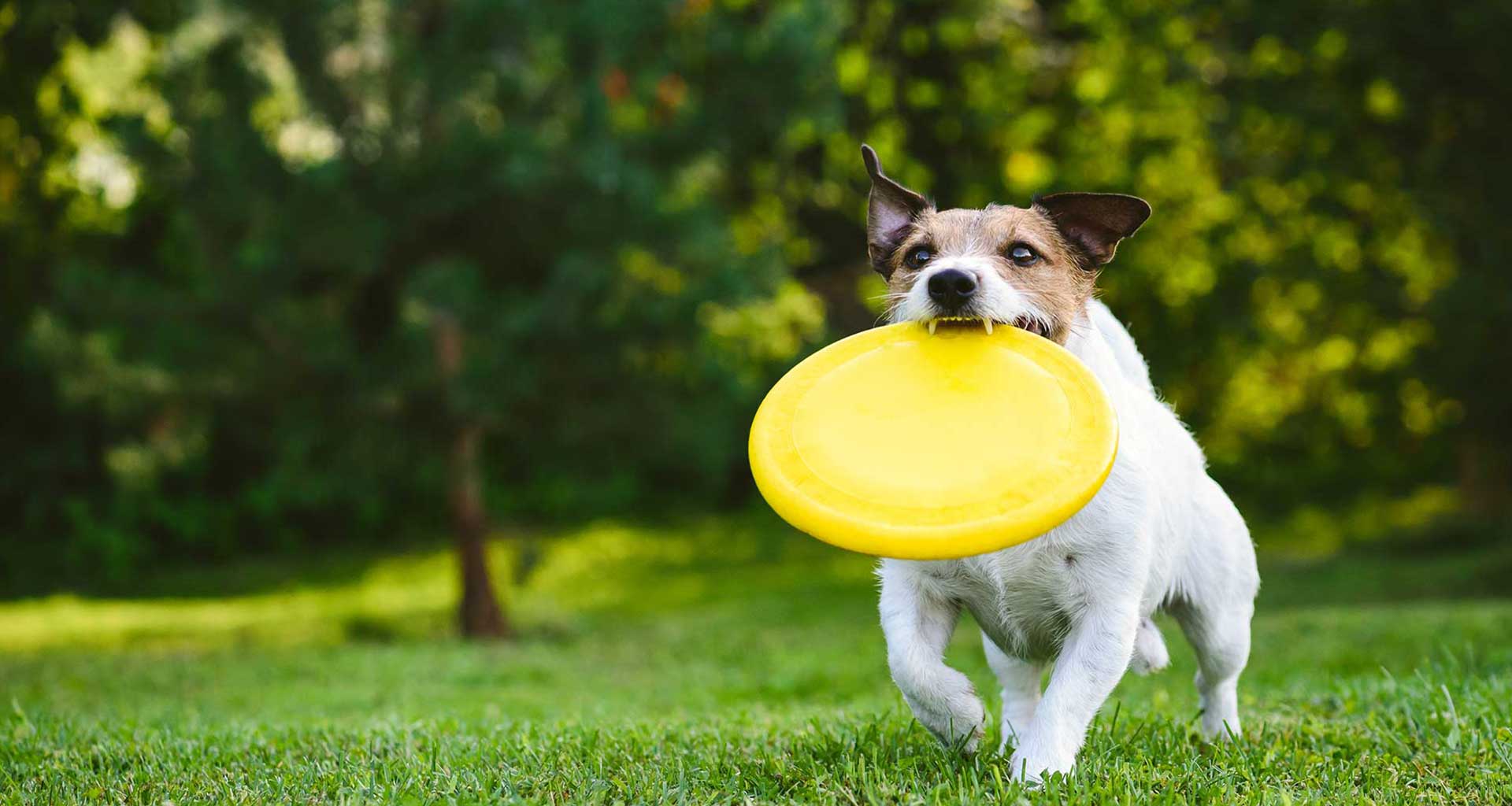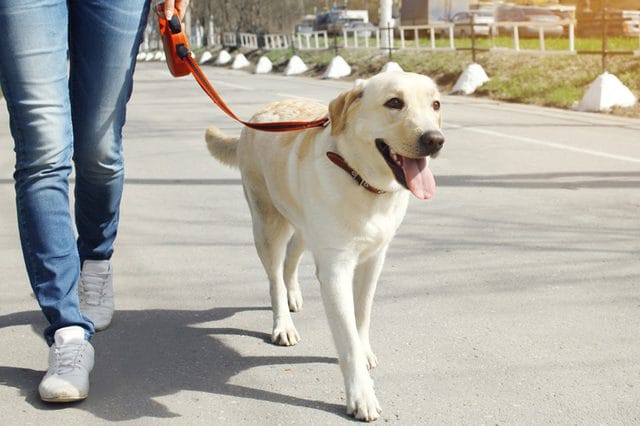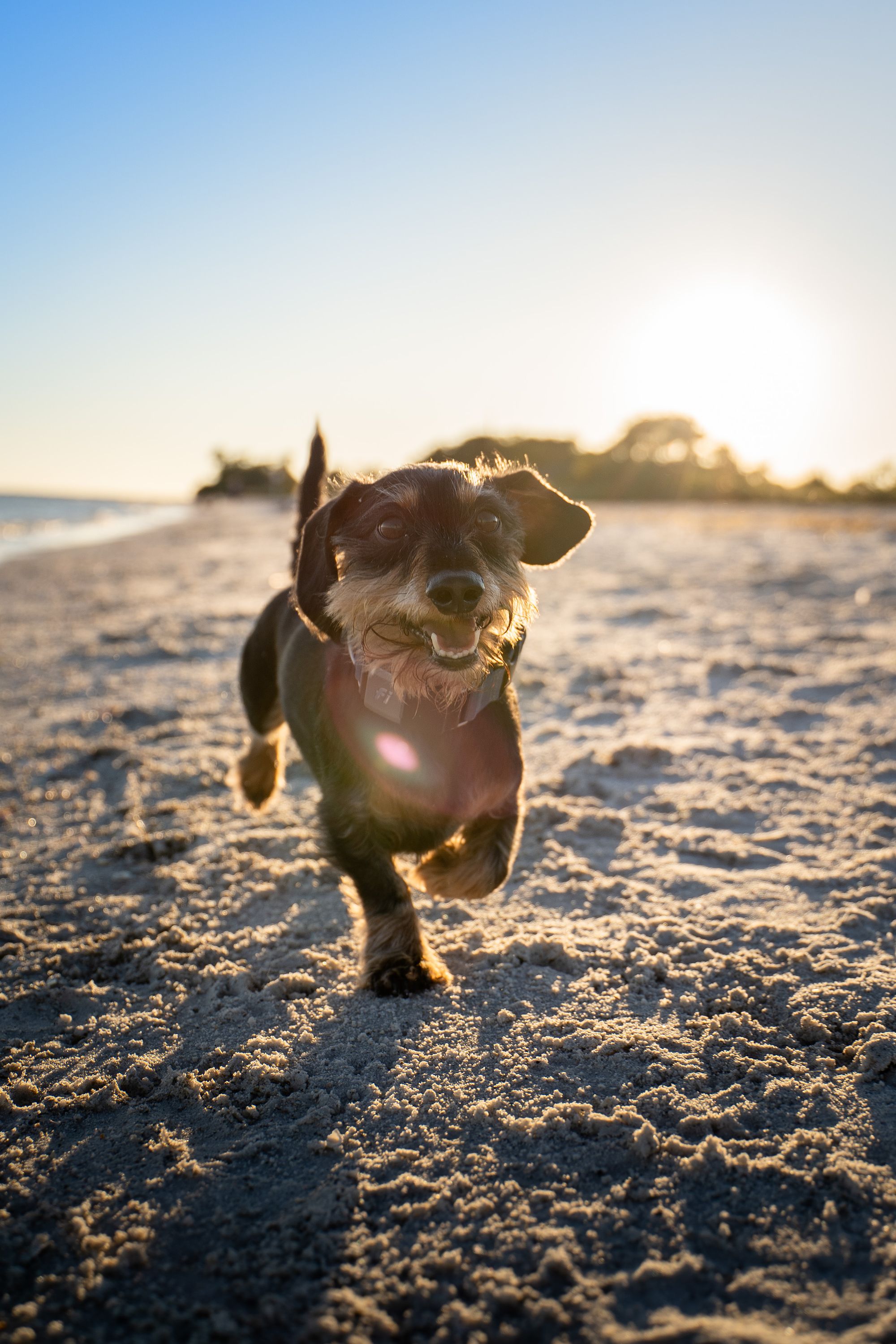Dog walking is a crucial aspect of a dog's daily routine, and it is essential to understand how often you should walk your furry friend. The frequency of dog walking depends on various factors, such as breed, age, size, and health condition. It is vital to provide your dog with enough exercise and mental stimulation to maintain their overall well-being. This article aims to provide information on how often you should walk your dog and the benefits of regular walks.

Regular walks can help your dog maintain a healthy weight, prevent boredom and destructive behavior, and enhance their socialization skills. However, it is crucial to understand your dog's needs and create a walking schedule that suits their lifestyle. This article will also provide tips on walking techniques and practices, addressing common walking challenges, and ensuring your dog's safety and comfort during walks.
Key Takeaways
- Understanding your dog's needs is crucial in determining how often you should walk them.
- Regular walks can provide numerous benefits, including maintaining a healthy weight and preventing destructive behavior.
- Creating a walking schedule and using proper walking techniques can enhance your dog's overall well-being.
Understanding Your Dog's Needs
Dogs are active animals that require regular exercise to maintain their physical and mental health. The amount of exercise a dog needs varies depending on several factors, including breed, age, and health status. Understanding your dog's needs is essential to ensure they receive the proper exercise and maintain their health.
Breed and Exercise Requirements
Different dog breeds have different exercise requirements. For example, working breeds like Border Collies and German Shepherds require more exercise than smaller breeds like Chihuahuas and Pomeranians. It is essential to research your dog's breed to determine their exercise needs.
Age-Related Activity Levels
The age of a dog also affects their activity levels. Puppies require more exercise than adult dogs, while senior dogs may have arthritis or joint issues that limit their physical activity. It is important to adjust your dog's exercise routine as they age to ensure they stay healthy.
Health and Physical Condition
A dog's health status can also affect their exercise needs. Dogs with health conditions like diabetes or overweight dogs may require a modified exercise routine. It is essential to consult with a veterinarian to determine the best exercise plan for your dog's health status.

In conclusion, understanding your dog's needs is crucial to ensure they receive the proper exercise and maintain their health. By considering factors such as breed, age, and health status, you can create an exercise routine that meets your dog's needs and keeps them healthy and happy.
Benefits of Regular Walks
Regular walks with your dog can provide a range of benefits, both physical and mental. Here are some of the advantages of walking your dog on a regular basis:
Physical Health Advantages
Walking your dog is a great form of exercise for both you and your furry friend. It can help improve joint health, strengthen bones, and keep both of you in good shape. By walking your dog regularly, you can help them maintain a healthy weight and reduce the risk of obesity-related health issues.

Mental Stimulation and Behavior
Walking your dog can also provide mental stimulation and prevent boredom. Dogs need physical activity and mental stimulation to stay healthy and happy, and regular walks can help provide both. Walking can also help reduce stress and anxiety in dogs, leading to better behavior and a more relaxed demeanor.
In addition to the physical and mental benefits, walking your dog can also provide an opportunity for socialization. Regular walks can help your dog become more comfortable around other dogs and people, and can also help you meet other dog owners in your community.
Overall, walking your dog on a regular basis can provide a range of benefits for both you and your furry friend. By making time for daily walks, you can help improve your dog's physical and mental health, while also strengthening your bond with your pet.
Creating a Walking Schedule
Walking your dog is an essential part of their daily routine. It provides them with exercise, mental stimulation, and helps to maintain their overall health. However, it can be difficult to determine how often you should walk your dog and when. Creating a walking schedule can help you establish a consistent routine that works for both you and your furry friend.
Consistency and Routine
The key to creating a successful walking schedule is consistency. Dogs thrive on routine, so it's essential to establish a regular walking schedule that you can stick to. Depending on your dog's age, breed, and activity level, you may need to adjust your walking schedule accordingly.
For puppies, it's recommended to take them for short walks several times a day. As they grow older, you can gradually increase the length and frequency of their walks. Senior dogs may require shorter and more frequent walks to accommodate their aging bodies. Active and working dogs may need longer and more intense walks to burn off excess energy.
To help establish a routine, consider walking your dog at the same time every day. This will help them anticipate when it's time to go for a walk and can also help prevent accidents in the house.
Adjusting for Dog's Lifestyle
When creating a walking schedule, it's important to consider your dog's lifestyle. If you have an active dog that loves to run and play, they may need longer and more frequent walks. On the other hand, if you have a more laid-back dog that prefers to lounge around the house, shorter walks may be sufficient.
You should also consider your own schedule when creating a walking schedule. If you work long hours during the day, you may need to adjust your walking schedule to accommodate your dog's needs. Consider hiring a dog walker or enlisting the help of a friend or family member to ensure your dog gets the exercise they need.
In conclusion, creating a walking schedule is an essential part of providing your dog with the exercise and mental stimulation they need. By establishing a routine and considering your dog's lifestyle, you can create a walking schedule that works for both you and your furry friend.
Walking Techniques and Practices
When it comes to walking your dog, there are a few techniques and practices that can make the experience more enjoyable for both you and your furry friend. Here are some tips to consider:
Proper Leash Use and Control
Using a leash is an important safety measure when walking your dog. Ensure that the leash is secure and not too long or too short. A good rule of thumb is to keep the leash short enough to maintain control, but long enough to allow your dog some freedom to move around.

It's also important to use the right collar or harness for your dog's size and breed. This will help prevent injury and ensure that your dog is comfortable throughout the walk.
Pace and Endurance Training
Walking is a great way to help your dog build stamina and endurance. Start with short walks and gradually increase the distance and duration as your dog becomes more comfortable.
It's important to pay attention to your dog's pace and adjust accordingly. Some dogs may want to walk at a brisk pace, while others may prefer a more leisurely stroll. Be sure to take breaks as needed and provide plenty of water to keep your dog hydrated.
Incorporating Play and Training
Walking doesn't have to be just about exercise - it can also be a great opportunity for play and training. Consider bringing along some toys or treats to reward good behavior and encourage your dog to engage in play.
Training can also be incorporated into your walks by practicing commands such as sit, stay, and come. This will help reinforce good behavior and improve your dog's obedience skills.
By following these walking techniques and practices, you can help ensure that your dog gets the exercise and stimulation they need while also strengthening your bond with them.
Addressing Common Walking Challenges
Walking your dog can be a fun and rewarding experience, but it can also come with its own set of challenges. Here are some common walking challenges that dog owners face and how to overcome them.
Dealing with Behavioral Issues
Behavioral issues can make walking your dog a difficult task. Some dogs may pull on their leash, bark excessively, or even become aggressive towards other dogs or people. To address these issues, it's important to start with proper training and socialization.
Training your dog to walk on a loose leash and respond to basic commands like "sit" and "stay" can help prevent pulling and barking. Socialization can also help your dog feel more comfortable around other dogs and people, reducing the risk of aggressive behavior.
If your dog continues to exhibit behavioral issues despite training and socialization, it may be helpful to seek the advice of a professional dog trainer or behaviorist.
Managing Health-Related Walking Concerns
Health concerns can also make walking your dog a challenge. Dogs with arthritis, pain, or other health issues may have difficulty walking long distances or at a brisk pace. Overweight dogs may also struggle with exercise tolerance and fatigue.
To manage these health-related walking concerns, it's important to consult with your veterinarian. They can provide recommendations for managing pain and inflammation, as well as advice on exercise and weight management.
In some cases, your veterinarian may recommend alternative forms of exercise, such as swimming or gentle stretching, to help your dog stay active and healthy.
Overall, by addressing common walking challenges like behavioral issues and health concerns, you can ensure that walking your dog is a safe, enjoyable experience for both you and your furry friend.
Safety and Comfort During Walks
Seasonal Considerations and Gear
When taking your dog for a walk, it is important to consider the season and weather conditions. During the winter months, it is crucial to protect your dog from the cold weather and potential frostbite. Dogs with shorter fur or smaller body size are more susceptible to the cold. Consider investing in a warm coat or sweater for your dog to wear during walks. Additionally, it is important to protect their paws from the snow and ice. Dog boots or paw wax can help prevent injuries and discomfort.
During the summer months, it is important to protect your dog from overheating. Avoid walking during the hottest part of the day and bring water for your dog to drink. Additionally, consider investing in a cooling vest or mat to help regulate their body temperature.
Recognizing Signs of Distress
It is important to be able to recognize signs of distress in your dog during walks. This includes excessive panting, lethargy, limping, or reluctance to continue walking. If your dog shows any of these signs, it is important to stop and take a break. Additionally, it is important to pay attention to your dog's body language and behavior. If they seem anxious or uncomfortable, try to identify the source of their discomfort. This could include interactive sounds or smells that are causing them distress.
Overall, ensuring your dog's safety and comfort during walks is crucial for their health and well-being. By considering seasonal conditions and recognizing signs of distress, you can help make walks an enjoyable experience for both you and your furry friend.
Alternatives to Walking
Indoor Exercise Options
Walking is a great way for dogs to stay active and fit, but sometimes the weather or other circumstances may prevent owners from taking their dogs on walks. Fortunately, there are several indoor exercise options that can help keep dogs active and burn off their energy.
One popular option is playing fetch indoors. This can be done in a hallway or a room with enough space. Another great option is using interactive toys that require dogs to use their problem-solving skills and physical abilities, such as puzzle toys or treat-dispensing toys. These toys can help keep dogs mentally stimulated and physically active.
Additionally, owners can also consider setting up an obstacle course in their home or backyard. This can include things like jumping over hurdles, crawling through tunnels, and weaving through poles. Not only does this provide physical activity, but it can also help improve a dog's agility and coordination.
Swimming and Other Activities
Swimming is another great alternative to walking, especially for dogs that enjoy water. Swimming is a low-impact exercise that can help improve a dog's cardiovascular health and muscle strength. Owners can take their dogs to a local pool or lake, or even set up a small pool in their backyard.
Other activities that can help keep dogs active and burn off their energy include playing tug-of-war, chasing bubbles, and playing hide-and-seek. These activities can be done indoors or outdoors and provide mental and physical stimulation for dogs.
It's important to note that while these alternatives to walking can be effective in keeping dogs active and preventing destructive behavior, they should not completely replace regular walks. Walking provides dogs with important opportunities for socialization and mental stimulation, and should be incorporated into a dog's exercise routine whenever possible.

Hiring a Professional Dog Walker
When to Consider a Dog Walker
Pet owners who work long hours or have busy schedules may find it challenging to give their furry friends the exercise they need. If a dog is left alone for extended periods, they may become bored, anxious, or destructive. Hiring a professional dog walker can be an excellent solution to ensure that your dog gets the exercise and attention they need during the day.
Dog walkers can provide potty breaks, bathroom breaks, and pee breaks throughout the day, which can help prevent accidents in the house. They can also offer socialization opportunities for your dog by taking them on walks with other dogs in the neighborhood. If you have a high-energy dog, a dog walker can provide them with the exercise they need to stay healthy and happy.
Choosing the Right Walker for Your Dog
When hiring a dog walker, it's essential to find someone who is reliable, trustworthy, and experienced with dogs. Pet owners should ask for references and check the dog walker's credentials before hiring them. It's also important to ensure that the dog walker has insurance in case of accidents or injuries.
Pet owners should discuss their dog's needs with the dog walker to ensure that they are a good fit. Some dogs may require a slower pace or shorter walks, while others may need more exercise. It's also important to discuss any health concerns or special needs that your dog may have.
A good dog walker should provide updates on how the walk went and any issues that may have arisen. They should also be willing to work with the pet owner's schedule and be flexible if needed.
In conclusion, hiring a professional dog walker can be an excellent solution for pet owners who are unable to provide their dogs with the exercise and attention they need during the day. By choosing the right dog walker, pet owners can ensure that their furry friends are happy, healthy, and well-cared for.
Frequently Asked Questions (FAQs)
- What is the recommended number of daily walks for a dog?
- The number of walks a dog needs depends on its breed, age, and size. However, it is generally recommended that dogs get at least two walks per day, each lasting about 20-30 minutes. This can vary depending on the dog's individual needs and energy level.
- How long should each dog walk typically last?
- Each dog walk should last for at least 20-30 minutes. However, this can vary depending on the dog's needs and energy level. Some dogs may require longer walks to burn off excess energy, while others may be content with shorter walks.
- What are the signs that a dog is getting enough exercise through walks?
- A dog that is getting enough exercise through walks will have a healthy weight, good muscle tone, and a calm demeanor. They will also have good cardiovascular health, strong bones, and a healthy appetite.
- How does a dog's breed and age affect its walking needs?
- A dog's breed and age can affect its walking needs. For example, a young, active dog may require more exercise than an older dog with lower energy levels. Similarly, some breeds are more active than others and may require more exercise to stay healthy.
- What are the consequences of not walking a dog regularly?
- Not walking a dog regularly can lead to a range of health problems, including obesity, joint pain, and cardiovascular disease. It can also lead to behavioral problems, such as anxiety and aggression.
- Are there alternatives to walking for a dog's exercise and bathroom needs?
- Yes, there are alternatives to walking for a dog's exercise and bathroom needs. Some dogs enjoy playing fetch, while others may prefer swimming or running in a dog park. Additionally, indoor activities such as playing with toys or using a treadmill can provide exercise opportunities for dogs who cannot go outside. However, it is important to remember that regular walks are still an essential part of a dog's overall health and well-being.






